Click on images to enlarge

infestation (Photo: Forest and Kim Starr, USGS)
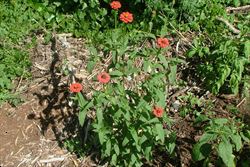
habit (Photo: Sheldon Navie)
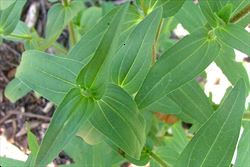
leaves (Photo: Sheldon Navie)
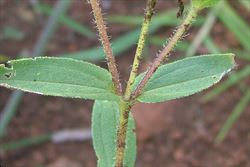
close-up of hairy stems and paired leaves (Photo: Sheldon Navie)
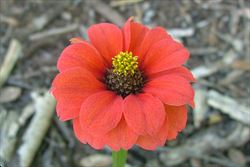
flower-head (Photo: Sheldon Navie)

close-up of flower-head showing tiny yellow tubular flowers (Photo: Forest and Kim Starr, USGS)

close-up of flower-head from side-on showing scale-like floral bracts (Photo: Forest and Kim Starr, USGS)
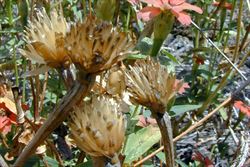
mature fruit (Photo: Forest and Kim Starr, USGS)
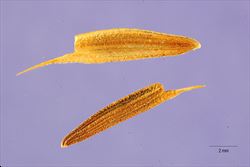
close-up of seeds (Photo: Tracey Slotta at USDA PLANTS Database)
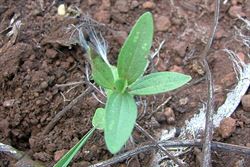
seedling (Photo: Sheldon Navie)

garden zinnia (Zinnia violacea), which has occasionally also become naturalised in eastern Australia (Photo: Sheldon Navie)

narrow-leaved zinnia (Zinnia angustifolia), which is also sparingly naturalised in Queensland (Photo: Sheldon Navie)
Scientific Name
Zinnia peruviana (L.) L.
Synonyms
Chrysogonum peruvianum L.
Family
Asteraceae (Queensland, New South Wales, the ACT, Victoria, Tasmania, Western Australia and the Northern Territory)Compositae (South Australia)
Common Names
kaffir daisy, Peruvian zinnia, redstar zinnia, wild zinnia, zinnia
Origin
Native to south-western USA (i.e. south-eastern Arizona), Mexico, Central America, the Caribbean and tropical South America (i.e. Venezuela, Bolivia, Colombia, Ecuador, Peru and north-western Argentina).
Naturalised Distribution
Widely naturalised in eastern Australia (i.e. in large parts of Queensland and northern New South Wales, and occasionally also in parts of central and southern New South Wales).
Also naturalised in China, southern Africa, beyond its native range in south-eastern USA (i.e. Florida, Georgia, South Carolina and North Carolina) and on some Pacific islands (e.g. the Galápagos Islands and Hawaii).
Notes
Wild zinnia (Zinnia peruviana) is regarded as an environmental weed in Queensland.

